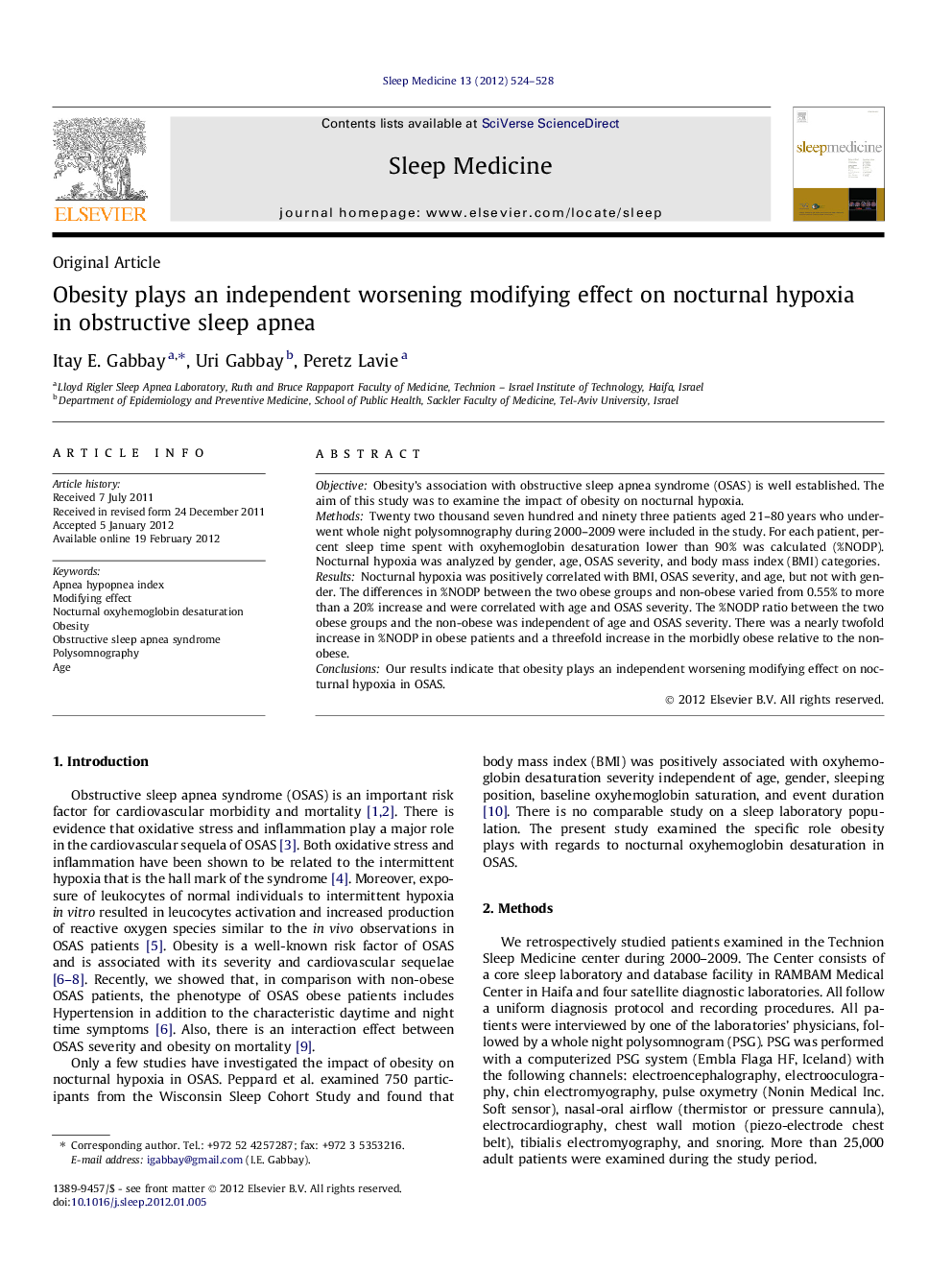| Article ID | Journal | Published Year | Pages | File Type |
|---|---|---|---|---|
| 3176429 | Sleep Medicine | 2012 | 5 Pages |
ObjectiveObesity’s association with obstructive sleep apnea syndrome (OSAS) is well established. The aim of this study was to examine the impact of obesity on nocturnal hypoxia.MethodsTwenty two thousand seven hundred and ninety three patients aged 21–80 years who underwent whole night polysomnography during 2000–2009 were included in the study. For each patient, percent sleep time spent with oxyhemoglobin desaturation lower than 90% was calculated (%NODP). Nocturnal hypoxia was analyzed by gender, age, OSAS severity, and body mass index (BMI) categories.ResultsNocturnal hypoxia was positively correlated with BMI, OSAS severity, and age, but not with gender. The differences in %NODP between the two obese groups and non-obese varied from 0.55% to more than a 20% increase and were correlated with age and OSAS severity. The %NODP ratio between the two obese groups and the non-obese was independent of age and OSAS severity. There was a nearly twofold increase in %NODP in obese patients and a threefold increase in the morbidly obese relative to the non-obese.ConclusionsOur results indicate that obesity plays an independent worsening modifying effect on nocturnal hypoxia in OSAS.
